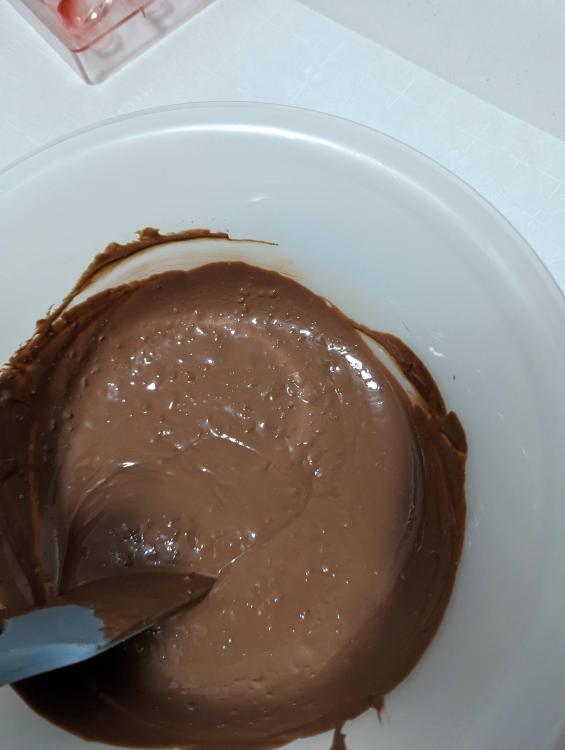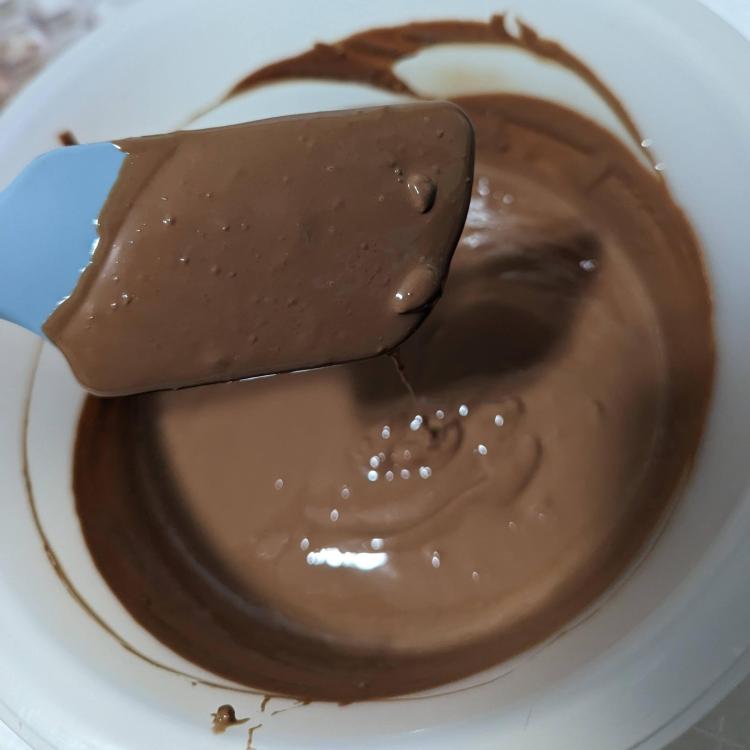-
Posts
29 -
Joined
Recent Profile Visitors
The recent visitors block is disabled and is not being shown to other users.
-
Interesting, ok. It's a Callebaut 823 block, and yes it was fully sealed when I got it. I'll pay more attention to moisture next time. This definitely isn't an issue of temperature then (overheating in the microwave, or sitting a hot truck during shipping, or things like that)?
-
It's maybe 70% humidity on average in the kitchen where I cut and microwave it, but everything else is done in an air conditioned room with low humidity and temperature. I can try with a new bag never letting it leave the air conditioned room. Is there anything else other than humidity to look out for that can cause this graininess?
-
It's about 4 months old. It melted in transit and then re-hardened. I opened the package, cut it into smaller blocks, and put each in a sealed ziploc bag. I'm in a somewhat humid climate, but I've been just taking it out of the bag to cut off a block, then resealing it. Is brief exposure to humidity enough to do this?
-
I've been experimenting with making bonbons for a few months now, and I'm running into an issue when melting the chocolate. In the beginning I wasn't running into any issues, but recently when I melt the chocolate in the microwave, most of it melts, but there are little grains or bits that never melt. If you smoosh them against the side of the bowl they disintegrate and go away, but otherwise even heating to very high temperatures, they never melt on their own. The consistency of the rest of the batch is fine (I could strain them out and it would work fine). I've had seized chocolate before, but that seems to affect the whole batch when it happens (not just little bits), and I've been very careful to avoid any contact with any drop of water. I thought maybe they were little overheated/burned bits, but I took brand new chocolate, melted it in 15 second increments on 50% power, and I still got the same result. Any tips on what I'm doing wrong here?
-
Got the book, it's full of great recipes, thanks for the recommendation! All of them call for light corn syrup instead of the glucose syrup that the "professional" books call for. Can those be substituted 1-1, or is there a difference using regular corn syrup?
-
Perfect, the book is in the mail, I look forward to it!
-
I see thanks, the regular way to make fondant, but just with the same quantity of cream instead of water? And following up on the butter oil or ghee topic, any idea how much to add to chocolate to soften it but still allow it to release from molds?
-
That's exactly what I was looking for, incredible selection there, thanks.
-
I see, that makes sense. Any suggestions for where to find butter oil in non-commercial quantities? I'm not seeing it on the baking supply sites where I've found other ingredients. Same goes for the soft version of fondant actually (which sounds like it's a pain to make by hand). I'll check out the book, thanks for the recommendation! Is this the right one? Candymaking Paperback – January 1, 1987 (eG-friendly Amazon.com link)
-
Thanks, it looks like I wasn't paying attention to the ingredient groupings in that list. Very interesting on the butter in the chocolate, I thought adding butter would seize chocolate because of the water content? For those fondant fillings, can someone point me to a recipe as a starting point? The Greweling book does mention fruit-based fondant fillings, but I don't see any of them that include cream (which these evidently do?).
-
Fair point. It's more to understand the possibilities and then be able to branch out from there. The softer shells and those fruit "creams" are both things that seem interesting to me to experiment with.
-
The holidays are reminding me that I used to eat See's Candies growing up, and now that I've been experimenting with chocolate bonbons, I was thinking of trying to imitate See's chocolates. When I make chocolates with tempered chocolate, the shell is hard with a good snap and then the filling is smooth. But I remember See's chocolates having a soft shell (kind of like a Snickers bar) without that snap. I assumed this was done with compound chocolate, but looking at their ingredient list on the website, I don't see any other oils or anything mentioned. Am I mis-remembering that texture? Is there a way to make chocolate shells softer? The other question is about See's cream flavors (like dark raspberry cream). The ingredient list makes it sound like a regular ganache with fruit puree and some butter. Is that all they are? Any ideas on getting a similar texture and flavor? Ingredient list: https://www.sees.com/custom-mix/dark-chocolate/dark-raspberry-cream/500239.html
-
Good point on reusing it for ganache. And thanks for the white chocolate recommendations, I'll check them out!
-
I thought I'd leave an update. I've been airbrushing outside (in quite hot and humid weather) and immediately bringing the mold back into the air conditioned room, and it seems to be working fine. Maybe it stays a little runny in the molds for longer than it would if spraying cold molds, but it seems to work fine for what I've been doing with it.
-
I've been experimenting with white chocolate bonbons and I'm running into a couple issues: Airbrushed colors look great on white chocolate, where they'd be much more muted on milk or dark. But if I airbrush a mold, then make white chocolate shells, the color winds up tinting the chocolate that I dump out while making the shells. So it's hard to re-use that chocolate, since it's light pink after using red color, for example. Any suggestions? I've been using Callebaut W2 with some fruit ganache ideas from Greweling's book, but the taste seems off. I'm not sure if it's the vanilla notes not combining well with fruit, or just the fact that it's very overwhelmingly sweet. Are there other white chocolates that would work better for this?





